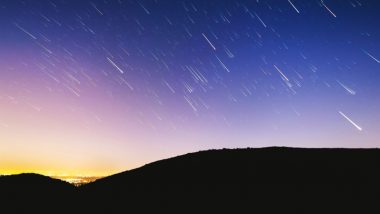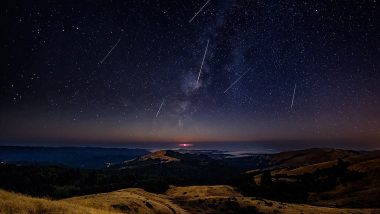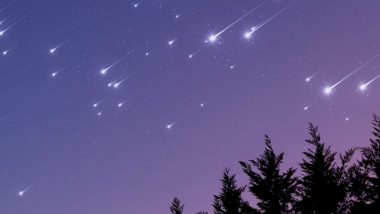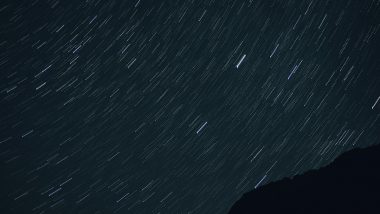As we all sit at homes in a lockdown of the Coronavirus pandemic, the night sky will put up a beautiful show of the Lyrids. The Lyrid Meteor Shower 2020 has begun from April 16 and is about to peak this week. The Lyrid meteors will peak on April 22 and it might be a good time to catch up on some shooting stars. Ahead of this celestial occurrence, we give you more details on the dates, timings and how and where you can watch it from. Aurora Australis Graces the Night Sky Over Queenstown and Tasmania, Video Captures Spectacular Natural Light Show.
Lyrid Meteor Shower 2020 Date and Time
The lyrid meteors have started appearing from April 16, but they will be at their peak on April 21 and April 22 night. According to Space.com, the meteor shower will peak overnight tonight (April 21) and into the early hours of Wednesday (April 22). The maximum activity is expected to occur around 2 a.m. EDT ie 11.30 AM IST, so we will not be able to see it.
What Are The Lyrids?
Every meteor shower that we see is actually space debris. The lyrids too are such space debris that originates from the comet C/1861 G1 Thatcher. It is one of the oldest known meteor showers, that has been observed for over 2,700 years. They get their name from the constellation Lyra, because that is the point in the sky from which they appear.
How to Watch Lyrids Meteor Shower?
Since it happens to be a moonless night, there are better chances of spotting these meteors in the sky. But one has to be an early riser, as the peak is said to be just two hours prior to the dawn. If the sky is clear then you can see the shooting stars very clearly. For those who cannot see it, you can enjoy the live streaming by different channels online. The Lowell Observatory in Arizona, US, will stream the event on their YouTube.
Here's The Video of Live Stream of Lyrid Meteor Shower 2020:
It is a beautiful coincidence that the Lyrid meteor shower reaches its peak on April 22, which is also celebrated as the Earth Day. Also, this meteor shower occurrence comes after quite a gap as the last one was seen in January. If you are lucky then you can see around 15 to 20 shooting stars per hour. The activity of the showers will be higher for those in the northern hemisphere.
(The above story first appeared on LatestLY on Apr 21, 2020 09:14 PM IST. For more news and updates on politics, world, sports, entertainment and lifestyle, log on to our website latestly.com).













 Quickly
Quickly




















